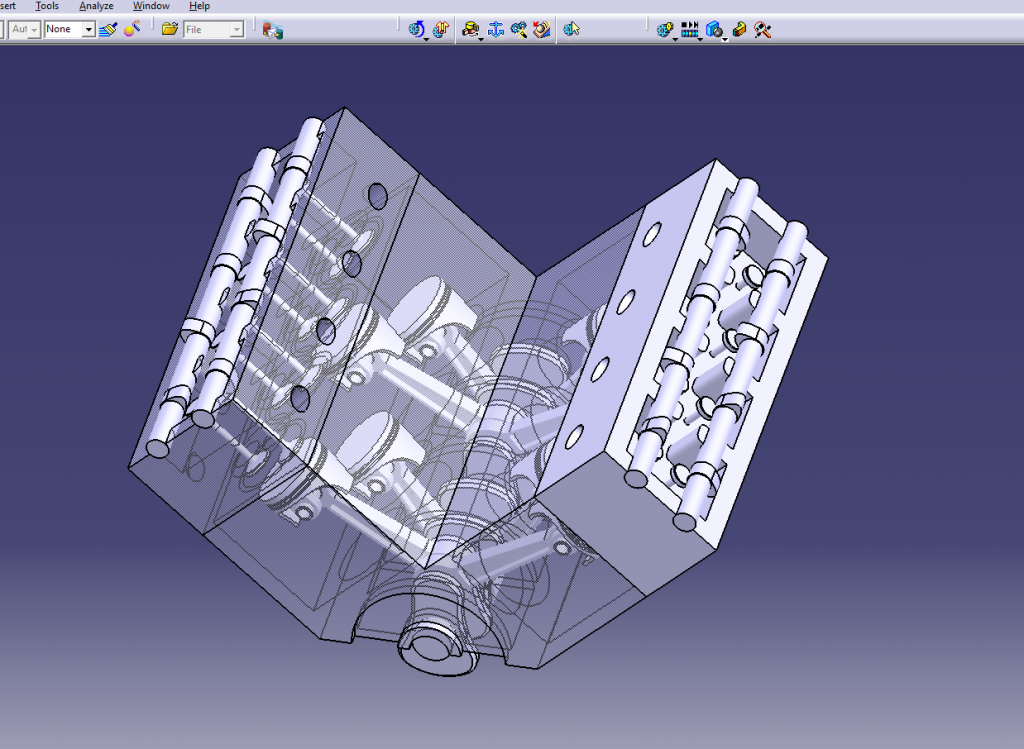simple V8 engine modeling
Undergraduate projects, 2017
V8 engine
A V8 engine is an eight-cylinder V configuration engine with the cylinders mounted on the crankcase in two sets (or banks) of four, with all eight pistons driving a common crankshaft. Most banks are set at a right angle (90°) to each other, some at a narrower angle, with 45°, 60°, and 72° most common.
In its simplest form, the V8 is basically two parallel inline-four engines sharing a common crankshaft. However, this simple configuration, with a flat- or single-plane crankshaft, has the same secondary dynamic imbalance problems as two straight-4s, resulting in vibrations in large engine displacements. Since the 1920s, most V8s have used the somewhat more complex crossplane crankshaft with heavy counterweights to eliminate the vibrations. This results in an engine that is smoother than a V6, while being considerably less expensive than a V12.
Many racing V8s continue to use the single plane crankshaft because it allows faster acceleration and more efficient exhaust system designs.

